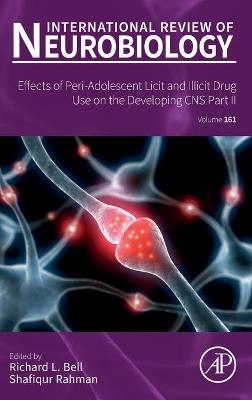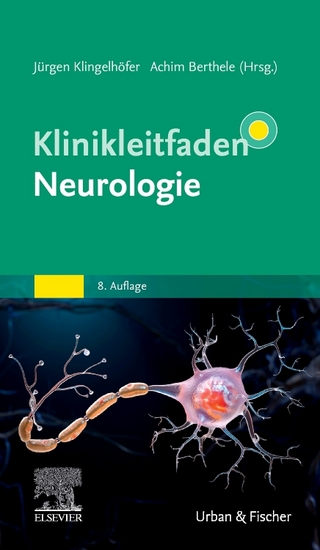
Effects of Peri-Adolescent Licit and Illicit Drug Use on the Developing CNS: Part II
Academic Press Inc (Verlag)
978-0-323-99260-2 (ISBN)
Dr. Bell received a Bachelor of Arts in General Psychology and Addiction Counseling from Minot State University (Minot, ND) and went on to receive a Master of Science and a Doctor of Philosophy in Applied Biopsychology, with a minor in Biostatistics, from the University of New Orleans (New Orleans, LA). He is presently an Associate Professor of Psychiatry at the Indiana University School of Medicine (Indianapolis, IN). He has been researching the in vivo effects of alcohol for 20 years and has maintained continuous funding from the National Institutes of Health—National Institute on Alcohol Abuse and Alcoholism for close to 15 years. His research during this time has focused on the behavioral genetics of rat lines selectively bred to consume high, vs very low, amounts of ethanol. The high ethanol-consuming rat lines display intakes corresponding with that of a 70 kg male drinking a fifth, or more, of 90-proof whiskey every day. These rat lines display many of the behavioral, physiological, neurochemical and genetic characteristics observed in clinical family history positive (FHP), for alcoholism, individuals; whereas the low ethanol-consuming rat lines serve as an animal model of family history negative (FHN) individuals. Moreover, these high ethanol-consuming rat lines meet established criteria for an animal model of alcoholism. Regarding this, he has written extensively on the genotypic as well as behavioral and neurochemical phenotypic characteristics of these and other major, international selectively bred high vs low ethanol-consuming rat lines. His more recent research has focused on three major areas: (1) innate and ethanol-induced changes in gene expression within subregions of the mesocorticolimbic and extended amygdala reward neurocircuits; (2) the acute as well as chronic behavioral and neurochemical effects of ethanol and/or nicotine exposure during adolescence and emerging adulthood; and (3) differences in the genetic, behavioral and neurochemical effects of binge-like, non-binge-like and relapse-like ethanol drinking and/or nicotine consumption. Scholastically, Dr. Bell has presented his findings to professional and lay audiences locally, nationally and internationally. He has published approximately 120 journal articles and book chapters. He serves as Associate Editor, Review Editor or Reviewer for over 50 international journals. He serves as a grant reviewer for the Veterans Affairs and the National Institutes of Health as well as multiple international academic institutions and is a member of the Research Society on Alcoholism—Animal Research and Ethics Committee. Shafiqur Rahman, Ph.D. is Professor of Pharmacology in the Department of Pharmaceutical Sciences at South Dakota State University (SDSU) in Brookings, USA. He received his Ph.D. in Neuropharmacology from the Memorial University of Newfoundland, Canada. Dr. Rahman completed his post-doctoral fellowship in the Department of Psychiatry from Indiana University School of Medicine in Indianapolis in USA. Prior to joining SDSU, he worked as research scientist and faculty at the University of Kentucky in Lexington, USA and the University of Toronto, Canada. Dr. Rahman's research focus is drug discovery in neuropharmacology, i.e. the development of novel therapeutic candidates for the treatment of drug addiction and neuropsychiatric disorders. His research and scholarship has resulted in over 125 publications and 11 edited books/book chapters. Dr. Rahman served as editor, editorial board member and reviewer for numerous Scientific Journals and review panels related to drug addiction, neuropharmacology, and drug discovery research. Dr. Rahman is also a member of several professional societies or organizations, including Society for Neuroscience, American Society for Experimental Neurotherapeutics, and American Society for Pharmacology and Experimental Therapeutics.
Preface: Introduction to Effects of Peri-Adolescent Licit and Illicit Drug Use on the Developing CNS R. L. Bell and S. Rahman 1. Peri-adolescent Exposure to (Meth)amphetamine in Animal Models T. J. Phillips and S. Aldrich 2. The Impact of Adolescent Nicotine Exposure on Alcohol Use During Adulthood: The Role of Neuropeptides G. Chen, M. Ghazal, S. Rahman and K. Lutfy 3. Cannabis Exposure During Adolescence: A uniquely Sensitive Period for Neurobiological Effects K. Z. Peters, N. E. Zlebnik, J. F.Cheer 4. The Stoned Age: Sex Differences in the Effects of Adolescent Cannabinoid Exposure on Prefrontal Cortex Structure and Function in Animal Models D.E. Ginder, H.R. Wright, R.J. McLaughlin 5. Adolescent Opioid Abuse: Role of Glial and Neuroimmune Mechanisms S. Rahman, Z.I. Rahman, P.J. Ronan, K. Lutfy, R.L. Bell 6. Adolescent Neuroimmune Function and its Interaction with Alcohol T. L. Doremus-Fitzwater and T. Deak 7. Alcohol, Inflammation, and Blood-Brain Barrier Function in Health and Disease Across Development A.S. Vore and T. Deak 8. Age Modifies the Effect of Ethanol on Behavior: Investigation in Adolescent, Adult and Aged rats D. B. Matthews and B. M. Imhoff 9. Early Life Stress and Susceptibility to Addiction in Adolescence K. E. Tschetter, L. B. Callahan, S.A. Flynn, S. Rahman, T. P. Beresford, P. J. Ronan 10. Future Directions for Part II: Substance Use Disorder in Adolescence-A Vision for a Better Future S. Rahman and R. L. Bell
| Erscheinungsdatum | 12.11.2021 |
|---|---|
| Reihe/Serie | International Review of Neurobiology |
| Verlagsort | Oxford |
| Sprache | englisch |
| Maße | 152 x 229 mm |
| Gewicht | 590 g |
| Themenwelt | Medizin / Pharmazie ► Medizinische Fachgebiete ► Neurologie |
| Naturwissenschaften ► Biologie ► Humanbiologie | |
| Naturwissenschaften ► Biologie ► Zoologie | |
| ISBN-10 | 0-323-99260-9 / 0323992609 |
| ISBN-13 | 978-0-323-99260-2 / 9780323992602 |
| Zustand | Neuware |
| Informationen gemäß Produktsicherheitsverordnung (GPSR) | |
| Haben Sie eine Frage zum Produkt? |
aus dem Bereich


